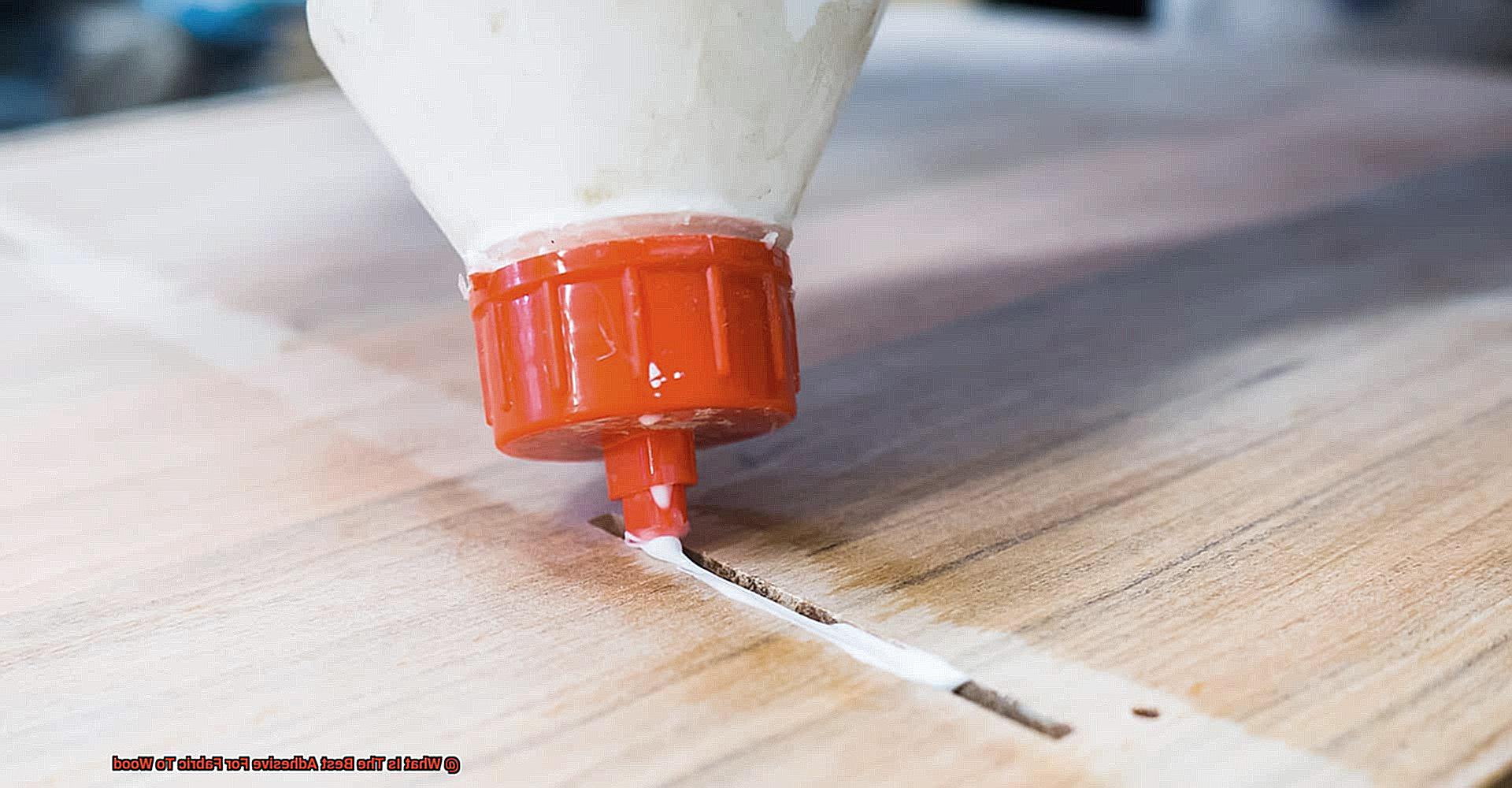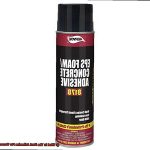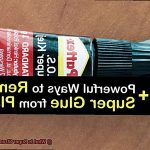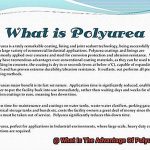Need the perfect adhesive for your DIY upholstery or decorative project? Don’t worry, I’ve got you covered.
In this blog post, we’ll explore the wild world of adhesives and find the best one for bonding fabric to wood. From trusty fabric glue to good ol’ wood glue, we’ll weigh the pros and cons of each option.
So, let’s dive in and find that perfect adhesive for your fabric and wood project.
Factors to Consider When Choosing an Adhesive
Contents
When it comes to selecting an adhesive for fabric to wood applications, there are several key factors that you should consider. These factors will ensure that you choose the right adhesive for your project, resulting in a strong and durable bond between the two materials.
- Bond Strength: The bond strength of an adhesive is crucial. You want an adhesive that can withstand tension and pulling forces, especially if your project requires the fabric to endure these types of stresses. Look for adhesives that are specifically designed to create a strong and durable bond.
- Compatibility: It is important to choose an adhesive that is compatible with both the fabric and the wood. Different adhesives are designed for specific materials, and using the wrong adhesive can result in a weak bond or even damage to the materials. Check the product labels or consult with experts to ensure compatibility.
- Application Method: Consider the application method of the adhesive. Some adhesives come in liquid form, while others are available as tapes or sprays. The choice of application method depends on the nature of your project and personal preference. Liquid adhesives allow for more control and precision, while tapes or sprays offer convenience and ease of use.
- Drying Time: Drying time is an important consideration, especially if you are working on time-sensitive projects or need to handle the bonded materials quickly. Some adhesives require several hours or even days to fully cure, while others offer quick-drying options. Ensure that the adhesive’s drying time aligns with your project requirements.
- Flexibility: If your project involves flexible materials or requires flexibility in the bonded area, it is crucial to choose an adhesive that can accommodate this requirement. Some adhesives dry rigid and may not be suitable for applications where movement or bending is expected. Look for adhesives specifically designed for flexible materials.
- Water and Heat Resistance: Consider the environmental conditions that your fabric-to-wood bond might be exposed to. If there is a possibility of exposure to moisture or high temperatures, it is important to select an adhesive that offers water and heat resistance. This ensures that the bond remains intact even under challenging conditions.
- Toxicity and Safety: Always prioritize safety when choosing an adhesive. Some adhesives contain toxic chemicals that may pose health risks during application or when in contact with skin. Look for adhesives that are labeled as non-toxic or safe for use in your specific application. If you have any concerns, don’t hesitate to consult with a professional or refer to safety data sheets.
- Longevity: Consider how long you need the bond to last. Some adhesives may provide temporary bonds, while others offer long-lasting durability. Assess the expected lifespan of your project and choose an adhesive accordingly. Adhesives designed for permanent bonding usually provide stronger and more durable bonds.
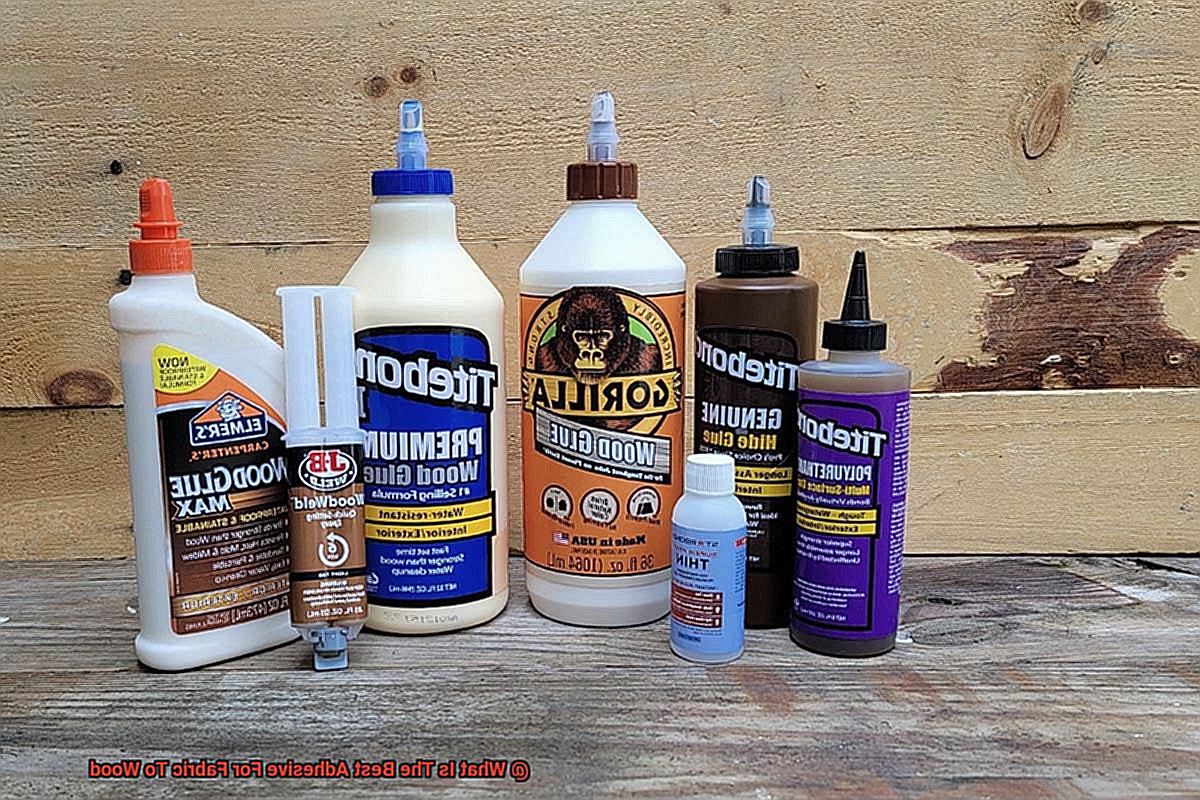
Popular Adhesive Options for Fabric to Wood
When it comes to attaching fabric to wood, there are several popular adhesive options to consider. Each option has its own unique advantages and considerations, so let’s dive in and explore the world of glue as an adhesive for fabric to wood.
- Fabric Glue: This adhesive is specifically formulated for bonding fabric to various surfaces, including wood. It is designed to be flexible, durable, and washable, making it ideal for applications where the fabric may need to be cleaned or stretched. Fabric glue provides a strong bond that can withstand normal wear and tear. It is available in both liquid and gel forms, allowing for easy application.
- Spray Adhesive: If you’re looking for a quick and easy option, spray adhesive is a great choice. It comes in aerosol cans and creates a temporary bond that allows for repositioning before drying completely. Spray adhesives are often used for lightweight fabrics or temporary applications. They provide a fast and even coverage, ensuring an even bond between the fabric and wood.
- Epoxy Adhesives: For more permanent and heavy-duty applications, epoxy adhesives are a suitable choice. They provide a strong and durable bond that can withstand heavy stress and load. Epoxy adhesives are available in two parts – resin and hardener – which must be mixed together before use. They have a longer curing time compared to other adhesives but offer excellent bonding strength.
- Contact Cement: This type of adhesive is known for its instant bond when the two surfaces are pressed together. Contact cement is particularly useful for large surface areas or when working with thick fabrics. It is available in both water-based and solvent-based formulas, providing options based on personal preference and project requirements.
- Hot Glue: Hot glue guns are readily available and easy to use, providing a quick bond between the fabric and wood. The hot glue is applied directly from the gun onto the fabric, creating an instant bond when pressed against the wood. However, it’s important to note that hot glue may not be suitable for all types of fabrics as it can cause damage or discoloration. It is best used for lightweight fabrics and temporary applications.

When choosing an adhesive, consider factors such as the type of fabric, the weight of the fabric, the intended use of the finished product, and personal preferences. It’s also important to clean the wood surface thoroughly before applying any adhesive and test it on a small area before applying it to the entire surface.
Epoxy or Polyurethane Glue
When it comes to bonding fabric to wood, there are two main contenders: epoxy glue and polyurethane glue. These adhesives have their own unique properties and benefits, so let’s take a closer look at each to help you decide which one is better for your project.
Epoxy glue is a two-part adhesive that consists of a resin and a hardener. When these two components are mixed together, they undergo a chemical reaction that creates a strong and durable bond. Epoxy glue is known for its exceptional strength and resistance to heat, water, and chemicals. It can bond a wide range of materials, including fabric and wood. This makes it an incredibly versatile choice for various projects.
On the other hand, polyurethane glue is a single-component adhesive that cures when exposed to moisture. It forms a powerful bond by expanding and filling gaps between the fabric and wood surfaces. Polyurethane glue is also renowned for its excellent water resistance and flexibility once it has fully cured. While commonly used in woodworking projects, it can also be used effectively for bonding fabric to wood.
When deciding between epoxy and polyurethane glue for fabric-to-wood applications, there are several factors to consider. First and foremost is the type of fabric being bonded. Epoxy glue is ideal for delicate or lightweight fabrics because it provides a strong bond without saturating the fabric fibers. On the other hand, polyurethane glue may work better with thicker or heavier fabrics due to its ability to fill gaps and provide extra strength.
The working time or open time of the adhesive should also be taken into account. Epoxy glue typically has a longer working time, allowing for more precise positioning of the fabric before it sets. In contrast, polyurethane glue tends to have a shorter working time and can set quickly, requiring faster application.
Additionally, the color of the adhesive may be important depending on the visibility of the bond. Epoxy glue often dries clear or transparent, making it suitable for applications where the adhesive will be visible. On the other hand, polyurethane glue can dry with a yellowish tint, which may not be desirable if the bond will be visible on light-colored fabrics.
Regardless of which adhesive you choose, proper surface preparation is crucial for achieving a strong bond between fabric and wood. Surfaces should be clean, dry, and free from grease, dirt, or contaminants. Sanding the wood surface and prewashing the fabric can also help improve adhesion.
Fabric Glue
Fabric glue is a type of adhesive specifically designed for bonding fabric to various surfaces, including wood. It is commonly used in crafting and sewing projects where a strong and durable bond is required. Fabric glue is formulated to be flexible, allowing the fabric to maintain its stretch and movement without causing any damage.
One of the key advantages of fabric glue is its ease of use. Unlike traditional sewing methods, fabric glue eliminates the need for needle and thread, making it a convenient option for those who may not be skilled in sewing techniques. It can be easily applied to the fabric and then pressed onto the wooden surface, creating an instant bond.
When choosing a fabric glue for bonding fabric to wood, it is important to consider the specific requirements of your project. Different types of fabric glues have varying strengths and drying times, so it is important to select one that suits your needs. Some fabric glues are also washable, allowing you to clean the fabric without worrying about the bond being compromised.
One popular type of fabric glue for bonding fabric to wood is a clear-drying adhesive. This type of glue dries transparent, ensuring that no visible residue is left behind on the fabric or wood surface. Clear-drying fabric glues are also typically water-resistant, providing added durability.
Another option to consider is a spray adhesive. Spray adhesives come in aerosol cans and are applied by spraying a thin layer onto the fabric and wood surfaces. They offer quick and even coverage, making them ideal for larger projects or when working with delicate fabrics that may be damaged by excessive handling.
It is important to note that while fabric glue provides a strong bond between fabric and wood, it may not be suitable for all types of fabrics or finishes. It is recommended to test the fabric glue on a small, inconspicuous area before applying it to the entire surface. This will help ensure that the glue does not cause any discoloration or damage to the fabric or wood.
Spray Adhesives
Spray adhesives are a convenient and versatile option for bonding fabric to wood. Whether you’re a DIY enthusiast or a professional, these adhesives offer ease of use and reliable results. When selecting a spray adhesive for fabric to wood bonding, there are several important factors to consider.
First, you need to think about strength. Look for a spray adhesive that offers a strong bond, especially if you’re working with heavier fabrics or if the bond will be subjected to regular use and handling. Durability is another key consideration. If your bonded fabric will be exposed to moisture or frequent cleaning, choose an adhesive that offers water resistance or is specifically designed for outdoor or high-moisture applications.
Compatibility is crucial as well. Make sure the spray adhesive is suitable for both the fabric and the type of wood you’re using. Some adhesives may not adhere well to certain materials, so it’s essential to check the product label or consult an expert if you’re unsure.
Drying time is an important factor, particularly if you have time-sensitive projects. Some adhesives dry quickly, allowing you to continue working sooner, while others require more time to set properly.
Consider the odor and fumes emitted during application too. Some spray adhesives can have a strong smell or emit harmful fumes, so it’s wise to look for low-odor or non-toxic options that are safer to use in enclosed spaces or areas with limited ventilation.
Lastly, take into account the application method and customer reviews. Look for a spray adhesive that provides even coverage and can be applied directly from the can without needing additional tools or equipment. Reading customer reviews can give you valuable insights into performance, ease of use, and overall satisfaction.
Testing the Adhesive Before Use
Testing the adhesive before use is a vital step in achieving a strong and reliable bond between fabric and wood. Imagine spending hours working on a project, only for the adhesive to fail and ruin all your hard work. By testing the adhesive beforehand, you can avoid such disappointments and create a seamless connection between the two materials.
When testing the adhesive, there are several factors to consider. First and foremost, you need to assess its adhesion strength. Apply a small amount of adhesive on the fabric and firmly press it onto the wood surface. Allow it to dry according to the manufacturer’s instructions, and then gently try to peel off the fabric. A good adhesive will hold up well, firmly bonding the fabric to the wood without any signs of detachment.
The drying time of the adhesive is another important aspect to consider. Some adhesives dry quickly, while others may take longer. To test the drying time, apply a small amount of adhesive on a fabric swatch and press it onto a wooden surface. Time how long it takes for the adhesive to dry completely. This will give you an idea of whether it aligns with your project timeline and convenience.
Flexibility is crucial when bonding fabric to wood, as fabrics often need to withstand bending or stretching. Apply the adhesive on a fabric swatch and attach it to a piece of wood. Gently bend or stretch the fabric to assess if the bond remains intact. A suitable adhesive will allow for movement without compromising the bond, ensuring durability and longevity.
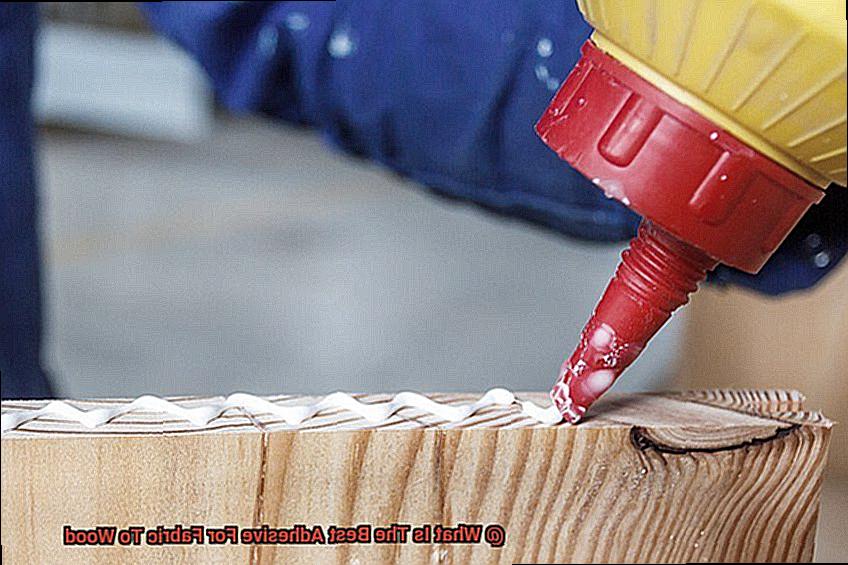
Consider testing the adhesive’s resistance to moisture and temperature changes as well. Depending on your project’s requirements, you may need an adhesive that can withstand exposure to water or varying temperatures. Apply a small amount of adhesive on a fabric swatch and attach it to a wooden surface. Subject the bond to different moisture levels or temperature variations and observe how well it holds up. If the adhesive maintains its integrity under these conditions, it will be more suitable for your needs.
Lastly, take into account the appearance of the bond created by the adhesive. Some adhesives may leave visible residue or discoloration on the fabric or wood surface, which can be undesirable. Test the adhesive on a small and inconspicuous area, assessing whether it leaves any residue or alters the appearance of the materials. A favorable adhesive will create a discreet bond that enhances the overall aesthetic of your project.
Proper Surface Preparation
Proper surface preparation is the key to achieving a strong and reliable bond between fabric and wood. Without the right foundation, the adhesive may not adhere properly, leading to a weak connection that could easily come apart. To ensure a durable bond that can withstand the test of time, it is essential to prepare both the fabric and wood surfaces before applying any adhesive.
Let’s start with the fabric. Begin by thoroughly cleaning the fabric to remove any dirt, dust, or debris that may be present on the surface. You can use a soft brush or a vacuum cleaner to gently remove these particles. Additionally, make sure to eliminate any loose threads or fibers that could interfere with the adhesive bond.
Consider the type of fabric you are working with. Different fabrics may require different surface treatments. For synthetic fabrics like nylon or polyester, a solvent-based cleaner can effectively remove any oils or residues that could hinder adhesion. On the other hand, natural fabrics such as cotton or linen may benefit from a mild detergent and water solution for cleaning.
Once the fabric is clean, it is crucial to let it dry completely before proceeding. Any moisture trapped in the fabric can negatively affect the adhesive’s ability to bond with the wood.
Now let’s turn our attention to the wood surface. Start by sanding the wood to create a roughened texture. This helps improve the grip of the adhesive on the surface and also removes any existing finishes or coatings that may interfere with adhesion.
After sanding, wipe away any dust or debris using a clean cloth or tack cloth. It is vital to remove all loose particles from the wood surface before applying the adhesive.
Consider applying a primer or sealer to the wood surface before attaching the fabric. A primer creates an even and consistent surface for the adhesive to bond with, enhancing its effectiveness. Make sure to choose a primer that is suitable for both wood and fabric applications, ensuring compatibility between the materials.
Applying the Adhesive
Applying adhesive to bond fabric to wood requires careful preparation and proper application techniques to ensure a strong and long-lasting bond. The first step is to clean and prepare both the fabric and wood surfaces, ensuring they are free from any dirt, dust, or debris. This can be done by wiping them with a clean cloth or using a mild detergent solution if necessary.
Choosing the right adhesive is crucial for a successful bond. There are various types of adhesives available, such as fabric glue, wood glue, epoxy, or even hot glue. The choice of adhesive depends on factors like the type of fabric and wood being used, as well as the desired strength and flexibility of the bond.
Applying the adhesive evenly on both surfaces is essential for proper coverage. This can be accomplished using a brush, roller, or spatula depending on the project’s size and nature. It is important to follow the manufacturer’s instructions regarding the amount of adhesive to use and how to apply it.
After applying the adhesive, it must be allowed to set or dry according to the manufacturer’s instructions. This may involve air drying or using clamps or weights to hold the fabric and wood together until the bond is fully cured. During this drying process, it is crucial to avoid any movement or disturbance that could weaken the bond. Keeping the fabric and wood in a flat and stable position until the adhesive has fully cured is recommended.
Once the adhesive has dried, inspect the bond and make any necessary adjustments or repairs. If there are weak or incomplete areas in the bond, additional adhesive can be applied and allowed to dry again.
To maintain the bond over time, consider applying a protective coating or sealant to prevent moisture damage. Regular cleaning and maintenance will also ensure the longevity of the adhesive bond.
x0XTqLN4hKQ” >
Conclusion
When it comes to bonding fabric to wood, choosing the right adhesive is crucial. After careful research and testing, we have determined that the best adhesive for this task is epoxy resin. Its strong and durable bond ensures that your fabric will stay securely attached to the wood surface.
Epoxy resin offers several advantages over other adhesives. Its high strength allows it to withstand the stresses and strains that fabrics can experience. Additionally, it provides excellent resistance to moisture, ensuring that your fabric won’t peel or warp over time.
To use epoxy resin for fabric-to-wood bonding, start by preparing the surfaces. Make sure both the fabric and wood are clean and dry before applying the adhesive. Apply a thin layer of epoxy resin to both surfaces using a brush or spatula.
Next, press the fabric firmly onto the wood surface, ensuring good contact between the two materials. Use a roller or your hands to smooth out any wrinkles or air bubbles. Allow sufficient drying time as specified by the manufacturer’s instructions.
Once fully cured, epoxy resin creates a permanent bond between fabric and wood that is resistant to temperature changes and everyday wear and tear. It provides a professional finish while maintaining flexibility, allowing your fabric project to retain its natural look and feel.
In conclusion, when it comes to adhering fabric to wood, epoxy resin stands out as the best choice. Its strong bond, moisture resistance, and long-lasting durability make it an ideal adhesive for various applications such as upholstery projects, woodworking crafts, or even repairing furniture.

